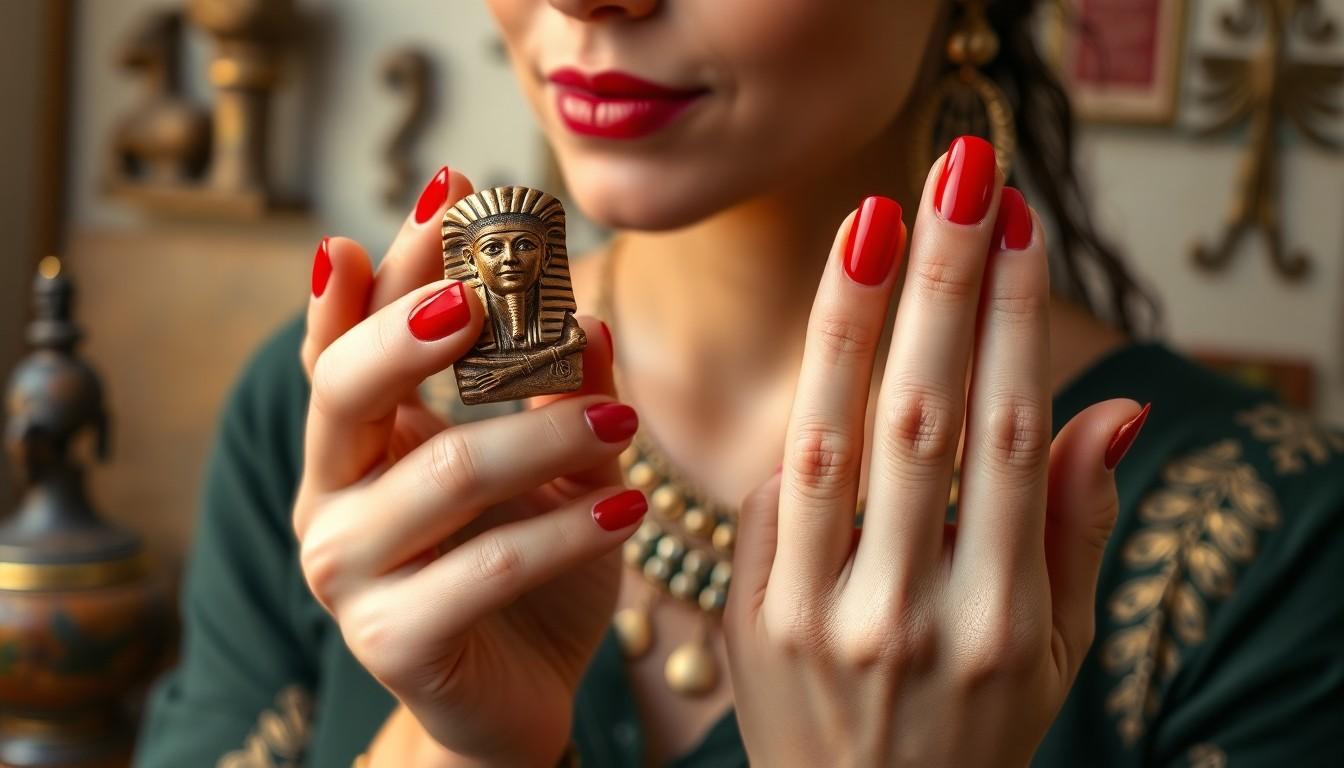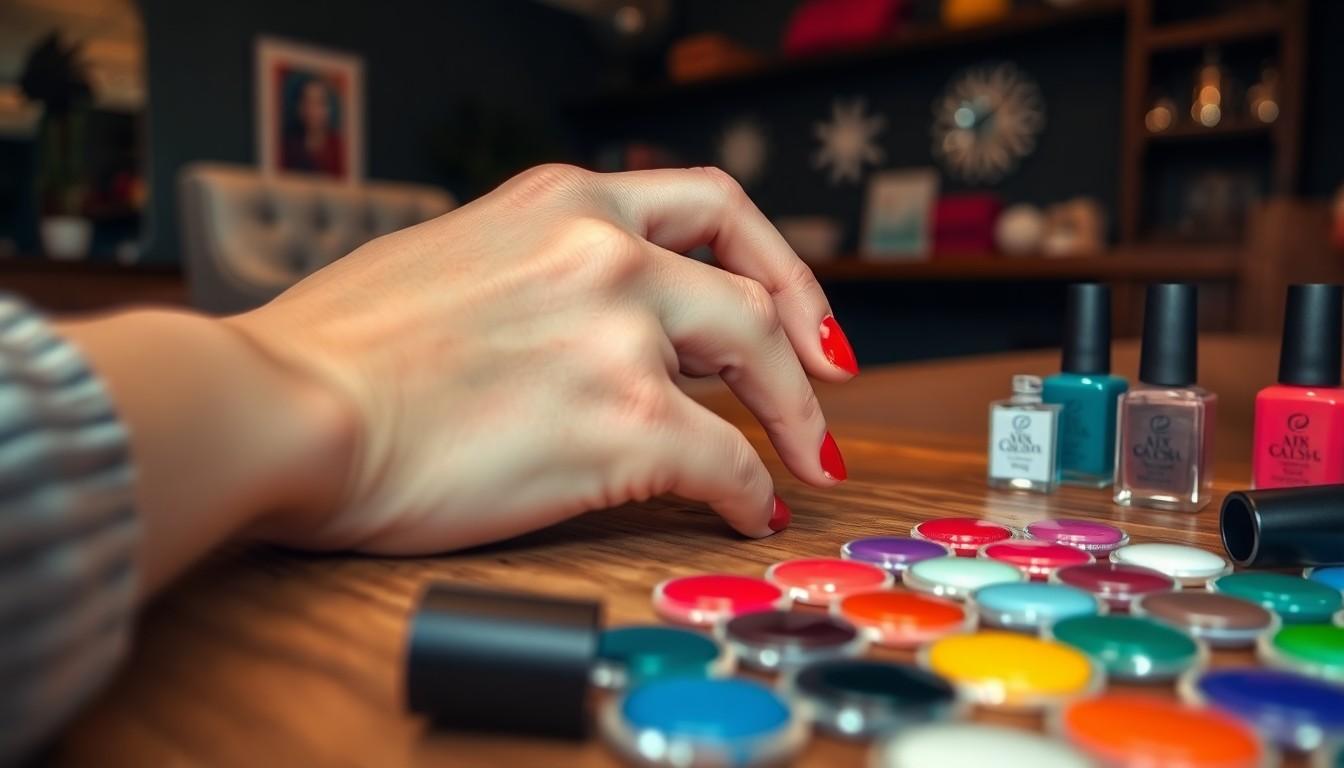Red nail theory has captured attention in recent years, sparking curiosity and debate about its implications in social dynamics. This intriguing concept suggests that the color red, particularly in nail polish, can influence perceptions of femininity and confidence. It’s more than just a fashion statement; it delves into how color psychology affects social interactions and personal branding.
As individuals navigate various social settings, the choice of a bold red nail can convey assertiveness and allure. This article explores the origins of red nail theory, its psychological underpinnings, and how it shapes the way people perceive themselves and others. By understanding this phenomenon, readers can gain insights into the powerful intersection of color, identity, and social perception.
Overview Of Red Nail Theory
Red Nail Theory suggests that men are more attracted to women who wear red nail polish. This theory originated on TikTok, primarily attributed to user @GirlBossTown (Robyn Delmonte). It posits that this attraction is rooted in men’s childhood experiences, where red nails were commonly associated with maternal figures and female authority figures, such as teachers, during the 1990s.
Psychologically, the color red carries significant cultural weight. In Western societies, red symbolizes love, passion, and sensuality. Research shows that both men and women perceive individuals adorned in red as more attractive. For instance, men often give larger tips to waitresses wearing red, indicating a direct correlation between the color red and perceived desirability.
Furthermore, red’s influence extends beyond Western cultures. Studies conducted across various societies demonstrate that red is a recurring theme in attraction, supporting the notion that biological associations with color can transcend cultural boundaries. A specific study highlighted attraction preferences in a small-scale African society that had no Western influence, further validating the universal appeal of red in attraction contexts.
Socially, wearing red nail polish may enhance a woman’s image, conveying confidence and assertiveness. The idea promotes the notion that bold colors make stronger statements about personal branding and femininity. As individuals utilize red nails as a form of expression, their social interactions may shift positively, enabling them to project a more confident self-image.
In examining the cultural and psychological aspects of the Red Nail Theory, it becomes evident that the color red serves as a simple yet powerful tool in shaping perceptions. This theory highlights how specific color choices can impact not only personal style but also interpersonal dynamics. By embracing red nails, individuals might enhance their attractiveness and assert their identity within social contexts.
Historical Context

The history of red nails is deeply rooted in various cultures, symbolizing power, status, and femininity through the ages. These ancient practices laid the groundwork for the modern interpretation of red nail polish.
Origins Of The Concept
The modern “red nail theory” emerged from a TikTok video created by Robyn Delmonte, known as @GirlBossTown. This theory posits that red nails elevate perceptions of femininity and confidence. Delmonte’s insights gained traction online, leading to discussions about the psychological effects of wearing red. Beyond its aesthetic appeal, this theory examines social influences and personal branding linked to the color red, especially in the context of romantic attraction.
Cultural Significance
In ancient Egypt, red nails signified power and status, prominently worn by figures such as Cleopatra, who used plant extracts for her nail polish. This practice represented blood, denoting strength and authority. Similarly, in ancient Africa, women adorned their nails with red to symbolize fertility, as supported by archaeological evidence. Historically, red nails indicated affluence and elite standing, clearly separating the wealthy from commoners. The pervasive influence of red across cultures showcases its lasting impact on notions of beauty and individual identity.
Key Principles Of Red Nail Theory

Red nail theory suggests that the color red in nail polish can greatly influence perceptions of femininity, confidence, and attraction. Understanding its underlying principles offers insight into its cultural significance.
Color Symbolism
Red is rich in symbolism, often representing love, passion, and sensuality. Centuries-old records from Africa depict women using red to symbolize fertility. In ancient Egypt, figures like Cleopatra adorned themselves with red nail color derived from plant extracts, using this color to signify blood and power. Today, red conveys notions of power, femininity, love, seduction, strength, and confidence. Each of these associations reinforces the idea that wearing red nails enhances a woman’s image, linking her to historical symbols of status and allure.
Psychological Implications
The psychological impact of red is profound; it evokes stronger emotions than any other color. Studies indicate that individuals wearing red are frequently perceived as more attractive, regardless of cultural backgrounds. This universal appeal highlights red’s ability to enhance a woman’s presence and influence social interactions. By wearing red nail polish, one can project confidence and assertiveness, tailoring their personal image to align with societal expectations of allure and desirability.
Application Of Red Nail Theory

The application of the Red Nail Theory extends into fashion and beauty, offering insights into how wearing red nail polish influences perceptions of femininity and social interactions.
In Fashion And Beauty
Wearing red nail polish acts as a powerful statement in fashion and beauty culture. Red symbolizes love, passion, and confidence, qualities that amplify a woman’s allure and assertiveness. Designers often incorporate red hues into collections, capitalizing on the color’s historical significance and emotional impact. Celebrities frequently adorn red nails on the red carpet, further solidifying the color’s association with glamour and high status.
Historically, red nail polish has represented affluence, tracing back to ancient civilizations. Cleopatra, for example, embraced red nails to signify her authority and power. This historical precedent continues today, as red nail polish is employed not just as a beauty choice, but as a tool for personal branding and self-expression.
In Social Perception
Red nail polish influences social perception by creating an immediate, impactful visual cue. Studies indicate that individuals dressed in red, including those wearing red nail polish, are often seen as more attractive and confident. The Red Nail Theory’s association with maternal figures further informs perceptions, suggesting that men might feel a subconscious attraction to those embodying this trait.
Research consistently supports the idea that colors evoke emotions and influence behavior. Red’s vibrant nature tends to command attention, facilitating positive interactions and attracting compliments. This societal response underscores red’s role in enhancing social dynamics, influencing not only personal interactions but also broader cultural trends in beauty and fashion.
Critiques And Controversies

The red nail theory, while popularized on social media, has faced significant scrutiny. Experts question its validity and the interpretations surrounding it.
Counterarguments
Experts highlight the lack of scientific evidence supporting the red nail theory. Celebrity nail artist Sonya Meesh states, “it seems like people are trying to diagnose men with this theory, but it’s not rooted in any science or reason.” Many argue that attraction is multifaceted, influenced by personal preferences, social context, and individual experiences rather than solely by nail polish color.
Evolving Perspectives
The discourse surrounding the red nail theory continues to evolve as more individuals express their views. Some suggest that the emphasis on red nails reflects broader societal expectations about femininity and attraction. Others critique the theory as reductive, implying that women’s worth hinges on their appearance. This ongoing conversation challenges the validity of the theory, encouraging individuals to explore personal expression beyond color associations.
Conclusion
Red nail theory offers a fascinating lens through which to view the intersection of color psychology, femininity, and attraction. It highlights how something as simple as nail polish can significantly influence perceptions and social interactions. While the allure of red nails is undeniable, it’s essential to recognize the complexity of attraction and personal expression.
The ongoing debate surrounding the theory encourages individuals to embrace their unique styles and challenge societal norms. Ultimately, red nail polish can be a powerful statement but should be viewed as one of many tools for self-expression rather than a definitive measure of worth or appeal.


